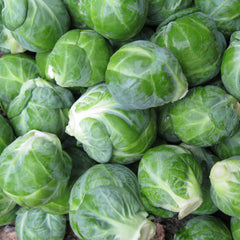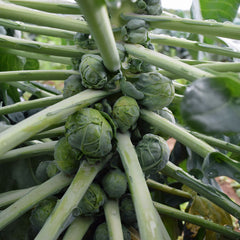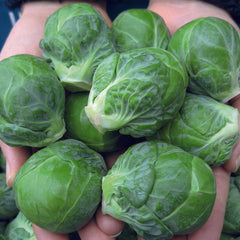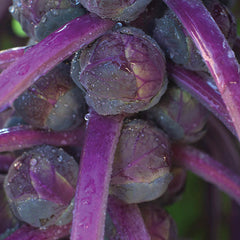Although not commonly found in home gardens and at Farmers’ Markets, Brussels Sprouts deserves consideration. They take a long time to mature, but the wait is worth it...
Although not commonly found in home gardens and at Farmers’ Markets, Brussels Sprouts deserves consideration. They take a long time to mature, but the wait is worth it. Brussels Sprouts are highly nutritious and will provide home gardeners a special tasty treat in late fall and early winter. For growers, they offer a fresh market vegetable that can be offered to customers late in the season, when all other locally grown vegetables have disappeared.
Brussels Sprouts Growing Tips
Brussels Sprouts are grown much the same way as broccoli, but timed for a late fall/early winter harvest, as the quality improves after freezing weather. Sprouts mature from the bottom up. Remove lower leaves as they yellow, and first pick sprouts at the bottom of the stalk. When lower sprouts are removed, the higher ones will mature more quickly.
Brussels Sprouts have a long maturity time of 85+ days, so often growers need to start the plants indoors in the winter/early spring to have sizable transplants for late-spring transplanting. If Brussels Sprouts do not have enough time to mature before the cooler fall temperatures set in, they may not produce sprouts at all or they will be very small. Nutrition can also play a role, fertilize Brussels Sprouts only early in the spring to help the plants get established and then stop fertilizing through the late summer and fall. This will encourage the plants to put energy toward forming the sprouts.
Fresh Market Grower Tips
Although Brussels sprouts can be strong flavored when harvested before fall frosts, they become sweet, delicately flavored “little cabbages” after cool fall weather sets in. In fact, Brussels sprouts can be harvested and enjoyed even after freezing temperatures have eliminated most other crops. Encourage your customers to steam, sauté, or roast sprouts for delicious fall and winter dishes.
1. Time your planting for a cold weather harvest.
2. If you plan to harvest whole stalks, cut off the plant’s top 4-5 weeks before harvest. This hastens maturity of the upper sprouts.
3. Before harvest, snap off leaves at the stalk to make harvest and sprout removal quicker and cleaner.
4. Cut whole stalks for easy transport from the field.
5. To harvest sprouts over multiple pickings, snap off sprouts from bottom to top.
Days to Maturity are from transplanting and should only be used as a guide to variety comparison.
Average Seed Count: 75 per packet; 115,000/Lb.







